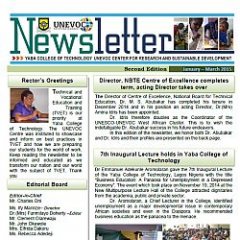 The ways we devour power and produce commodities are changing. This transformation may gain advantage the global financial system, however resource producers should adapt to remain competitive.
The ways we devour power and produce commodities are changing. This transformation may gain advantage the global financial system, however resource producers should adapt to remain competitive.
While the changes going through resource producers and policy makers are prone to be advanced and quite a few, the rewards of greater productivity, faster progress, and a much less resource-intense financial system can profit all. The world of commodities over the past 15 years has been roiled by a supercycle” that first sent prices for oil, gasoline, and metals hovering, only for them to return crashing back down. Now, as useful resource companies and exporting international locations choose up the items, they face a new disruptive period. Technological innovation —including the adoption of robotics, artificial intelligence, Internet of Things expertise, and information analytics—along with macroeconomic trends and changing shopper conduct are transforming the way resources are consumed and produced.
A new McKinsey Global Institute report, Beyond the supercycle: How expertise is reshaping assets, focuses on these three trends and finds they have the potential to unlock around $900 billion to $1.6 trillion in financial savings throughout the global economy in 2035 (exhibit), an amount equivalent to the current GDP of Canada or Indonesia. At least two-thirds of this total worth is derived from diminished demand for vitality as a result of larger power productivity, whereas the remaining one-third comes from productiveness financial savings captured by useful resource producers. Demand for a variety of commodities, significantly oil, may peak within the next 20 years, and prices could diverge extensively. How large this chance ends up being relies upon not solely on the rate of technological adoption but also on the way in which useful resource producers and coverage makers adapt to their new atmosphere.
Policy makers may capture the productiveness benefits of this useful resource revolution by embracing technological change and allowing a nation’s energy combine to shift freely, even as they handle the disruptive effects of the transition on employment and demand. Resource exporters whose funds rely on useful resource endowments might want to find different sources of income. Importers may stock up strategic reserves of commodities while costs are low, to safeguard in opposition to supply or value disruptions, and spend money on infrastructure and training. Create a profile to get full access to our articles and reviews, including these by McKinsey Quarterly and the McKinsey Global Institute, and to subscribe to our newsletters and e mail alerts.
On the demand side, consumption of vitality is changing into less intense and extra efficient as people use less vitality to dwell their lives and as power-efficient technologies change into extra integrated in homes, businesses, and transportation In addition, technological advances are serving to to bring down the price of renewable energies, similar to solar and wind power, handing them a greater role in the global economic system’s power mix, with vital results for both producers and customers of fossil fuels. On the supply facet, useful resource producers are more and more in a position to deploy a range of applied sciences of their operations, placing mines and wells that had been once inaccessible inside reach, raising the effectivity of extraction methods , shifting to predictive maintenance, and using subtle data analysis to establish, extract, and manage assets.